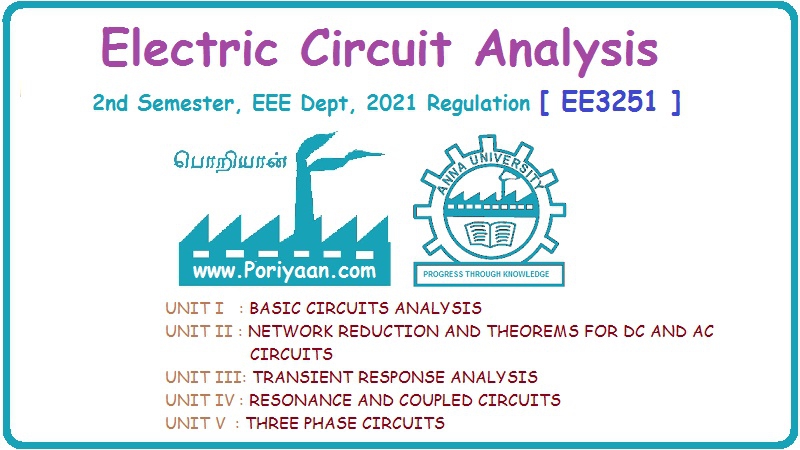Electric Circuit Analysis: Unit II: Network Reduction and Theorems for dc and ac Circuits
Network Reduction and Theorems for dc and ac Circuits
To find the expressions for the voltages V1, V2 and V3 in terms of V, R1, R2, R3
Unit - II
NETWORK REDUCTION AND THEOREMS FOR DC AND AC CIRCUITS
VOLTAGE DIVISION:
To
find the expressions for the voltages V1, V2 and V3 in
terms of V, R1, R2, R3 for
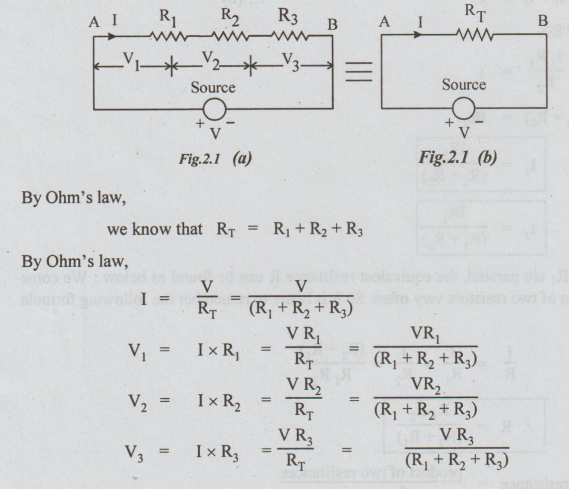
Current
division formula:
(a)
In many cases, we will have only two resistors connected in parallel
Let
these resistors be R1 and R2 as shown in the Fig.2.2.
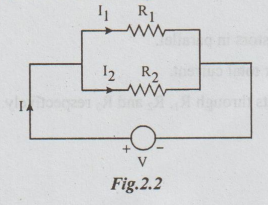
The
total current = I
Current
through R1 = I
Current
through R2 = I2
To
express I1,
and I2,
in terms of I, R1 and
R2.
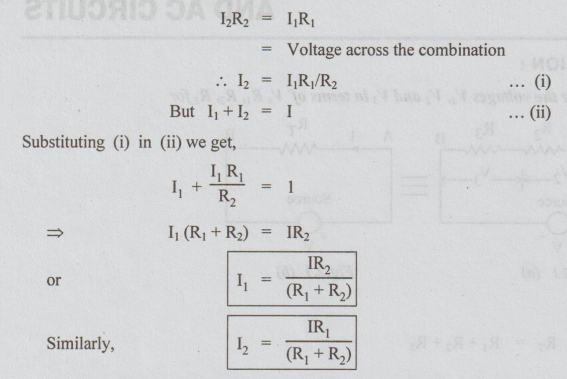
Note:
In case R, and R2 are parallel, the equivalent resistance R can be found as
below: We come across parallel combination of two resistors very often. So it
is better to remember the following formula for R.
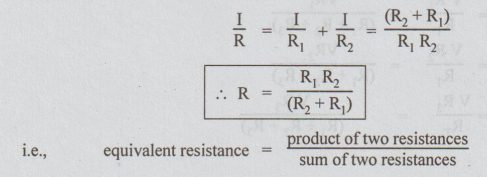
The
reader is to note that the above formula is true only for two resistances in
parallel.
(b)
When three resistors are in parallel: To find
equivalent resistance and the expressions for branch currents. Refer Fig.1.12
Let
R1, R2 and R3 be the resistors in parallel.
Let
I be the supply current or total current.
Let
I1, I2 and I3 be the currents through R1,
R2 and R3 respectively.

To
find the currents I1,
12 and 13
:
Given R1, R2, R3 and I.
We
know that,
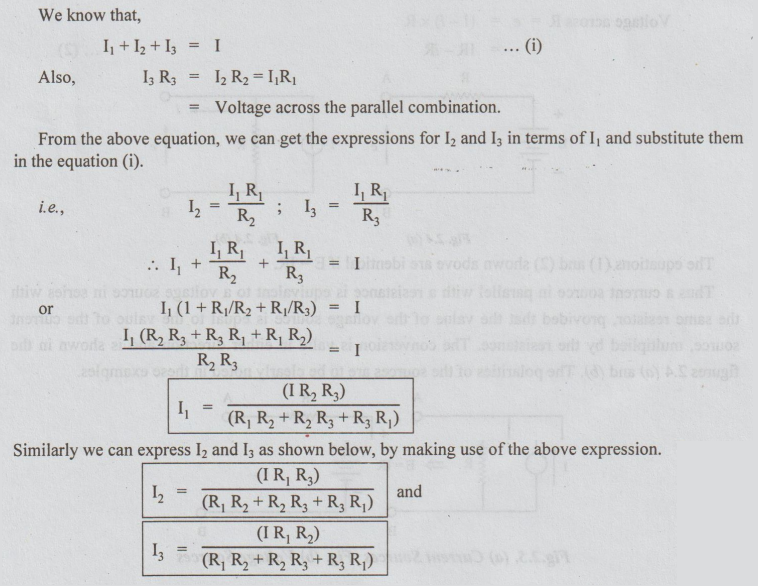
Note:
1.
If there are n resistors each of R ohms connected in parallel, the equivalent
resistance is RT = R / n
2.
For getting more resistance we need series combination.
3.
For getting lesser resistance we need parallel combination.
Electric Circuit Analysis: Unit II: Network Reduction and Theorems for dc and ac Circuits : Tag: : - Network Reduction and Theorems for dc and ac Circuits
Related Topics
Related Subjects
Electric Circuit Analysis
EE3251 2nd Semester 2021 Regulation | 2nd Semester EEE Dept 2021 Regulation
